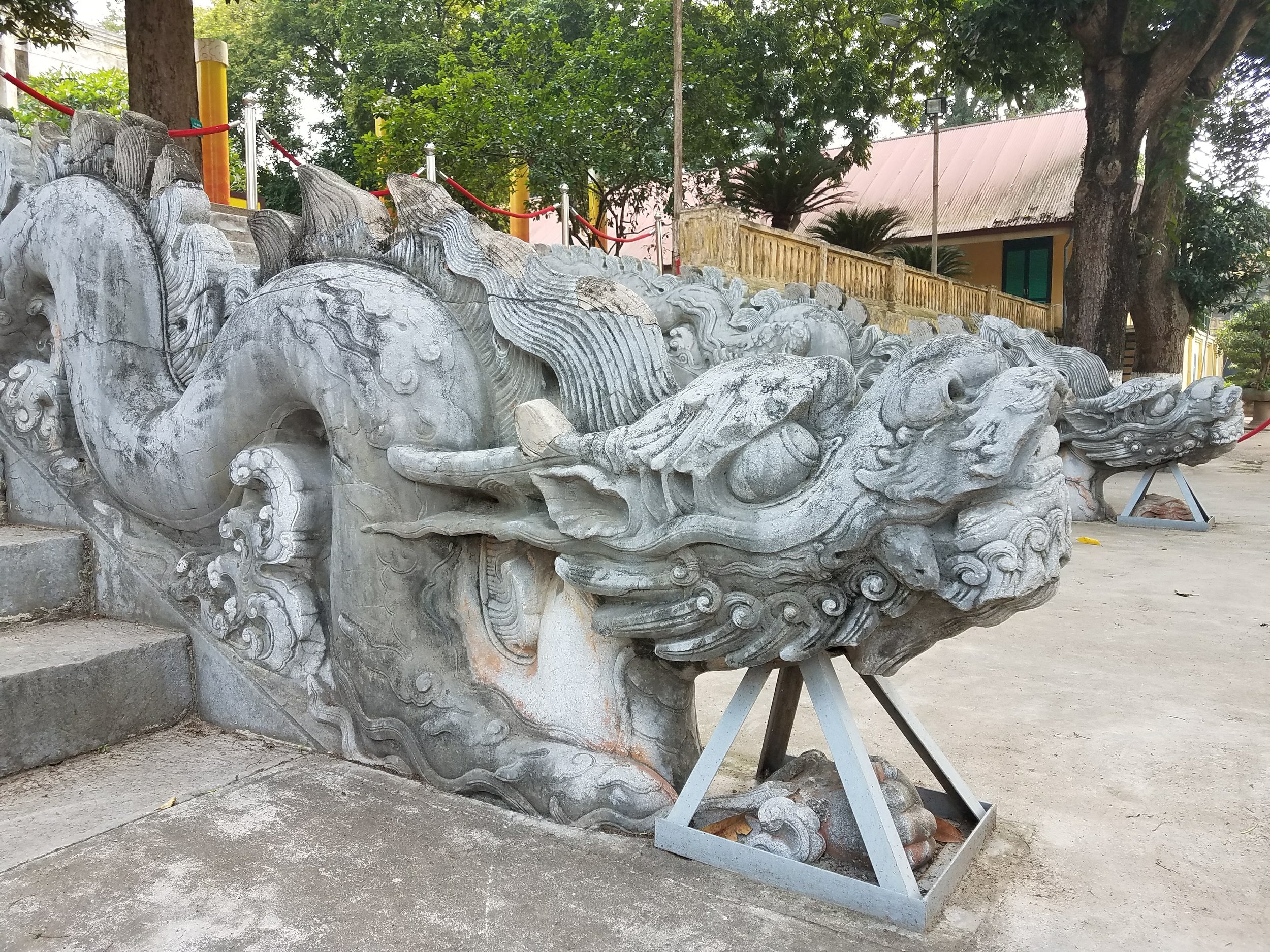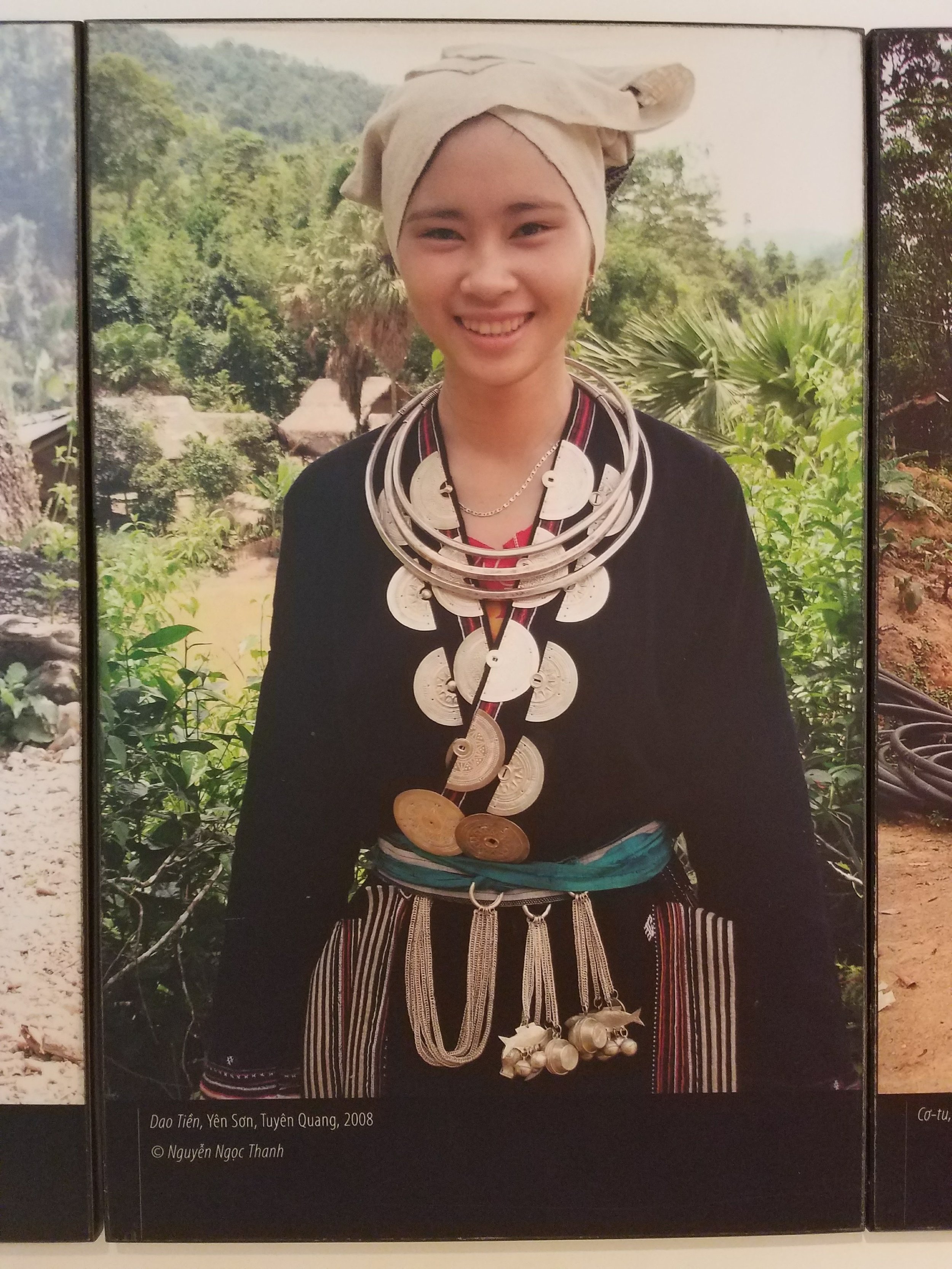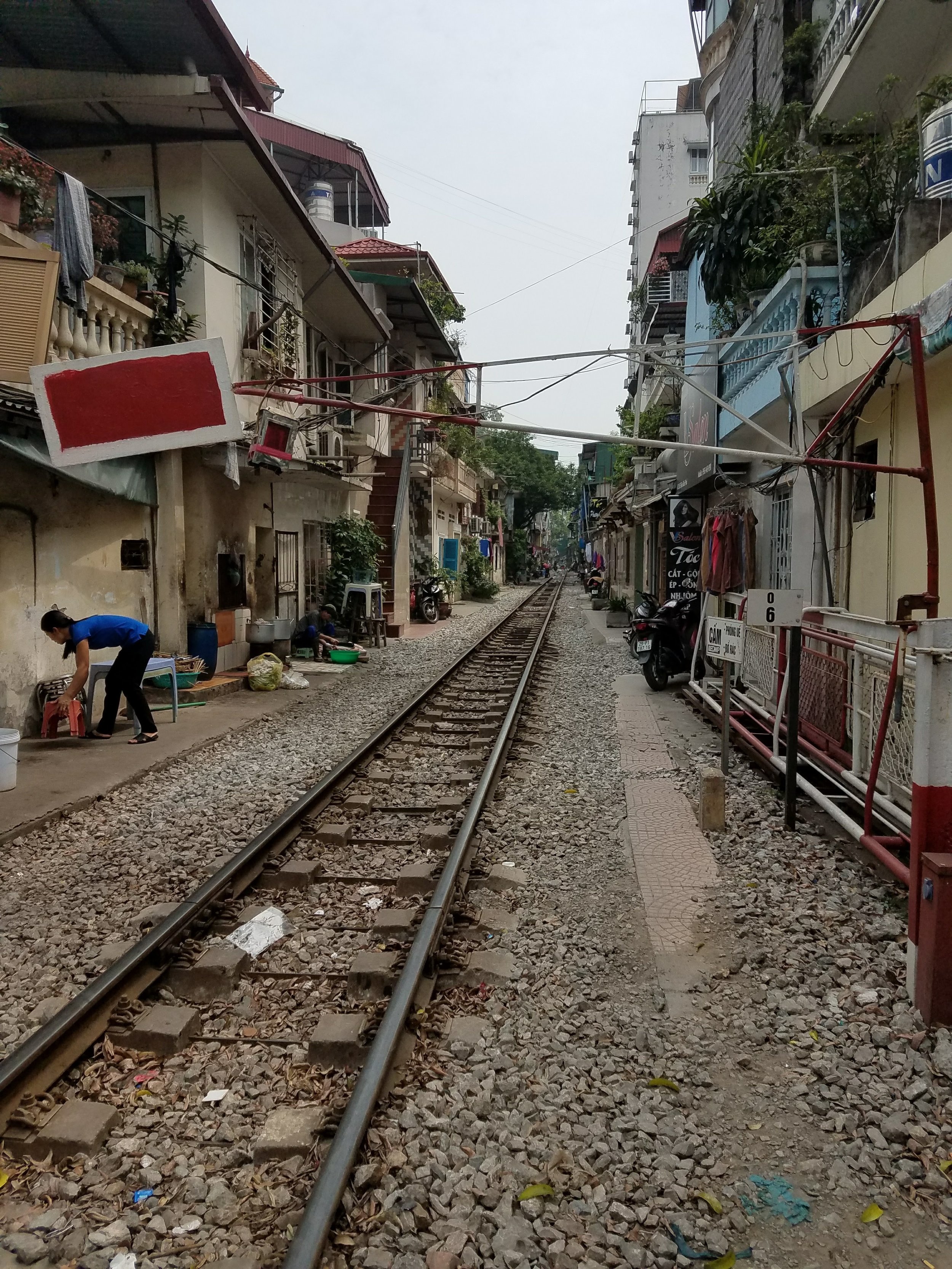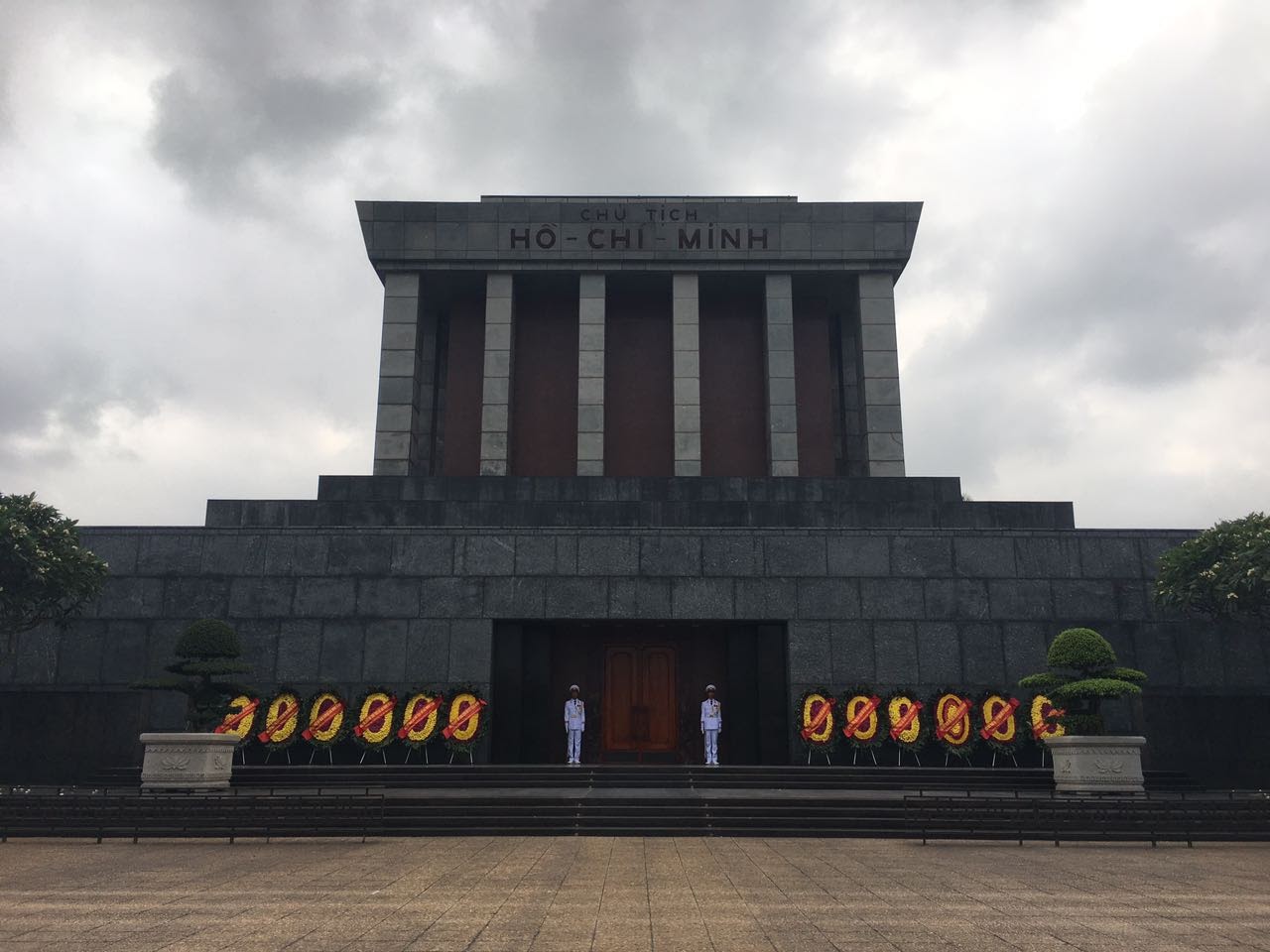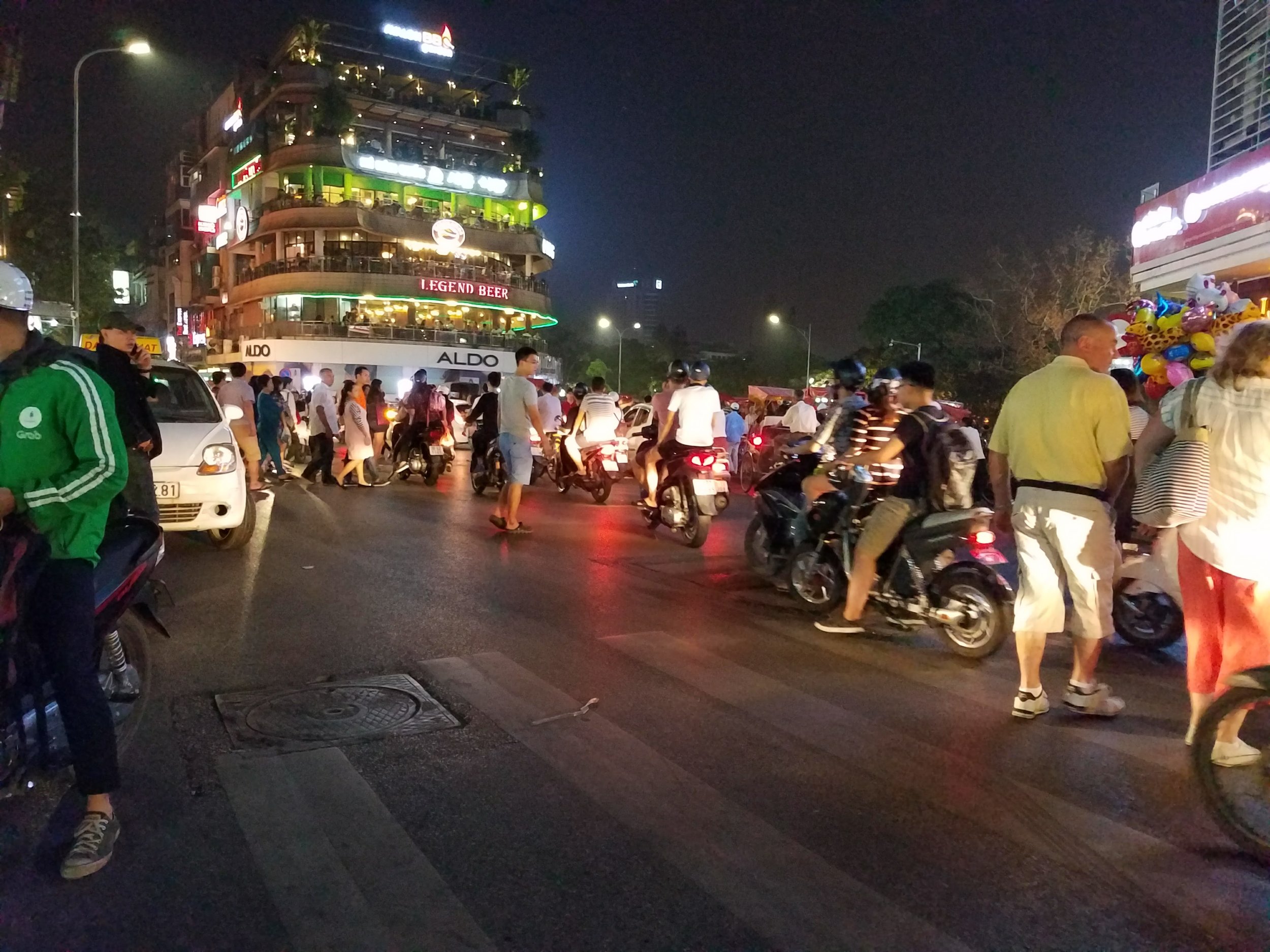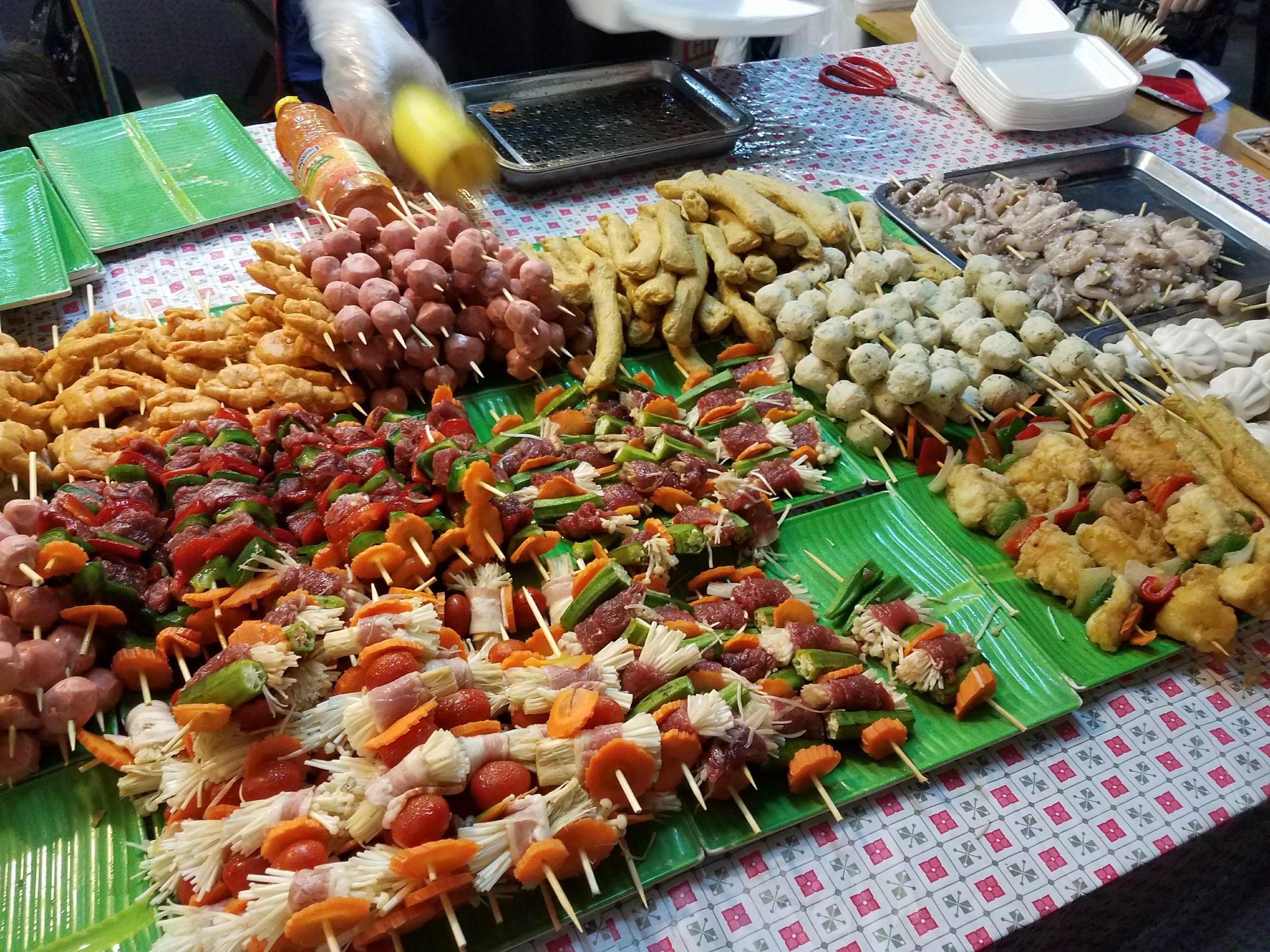Vietnam: Hanoi Culture, Arts, & Leisure
My second trip to Hanoi was my chance to visit museums and cultural destinations. I got an early start at the Citadel, one of the earliest locations to open and a nice 20-minute walk through morning commuters and past tai chi practitioners in the park.
Seeing the Flag Tower was what had drawn me to the Citadel in the first place, but ironically it was the only portion of the compound that I didn't get to see. I couldn't figure out how to get to it! And the only map they had to hand out was in various Asian languages. Fortunately, the signs on the walkways of the rest of the compound were translated in English and the rest of the site was an interesting mix of historical artifacts and buildings, dating from the beginning of the last millennium to the 1970s.
A UNESCO World Heritage Site, the Citadel was the location of the royal court from the 11th to the 19th centuries; the oldest ruins were only recently unearthed fifteen years ago and are still being excavated. In the 1960s, the Citadel held the command headquarters and underground bunkers for the North Vietnamese Army.* The military headquarters' exhibition was my first time seeing descriptions of the Vietnam War as written by the victors, including "liberating" the south and naming it the "American War." I saw more of this on my subsequent museum visits.
I was impressed by the Women's Museum. It's divided into three levels, each covering a different category: Women in Family, Women in History, and Women's Fashion. Each category explored the variances of the diverse populations of Vietnam (I was especially drawn to the fashions; the hand-beading and embroidery were beautiful as were the color and pattern combinations). My only critique is that it would have been helpful to have a map showing which part of the country each group came from. For instance, some are matriarchal societies whereas others are patriarchal—but where are they in relation to each other?
At Hoa Lo Prison (aka the "Hanoi Hilton"), I was again reminded of the Communist victors writing history. Every room had a sign that described some kind of atrocity that took place in the cells or prison in general, and all ended with some statement about how that atrocity didn't crush the revolutionaries' spirits and they still continued to fight for the cause...etc. Additionally, in the museum's coverage of American-Vietnamese relations during/since the war, they had a war-era propaganda video playing, describing the great way the U.S. soldiers were treated. It took me a moment, after perusing the other displays in the room, to realize that it was being played not only as a historical document, but in earnest—to perpetuate that story. All of the photos in the exhibit were positive, showing American prisoners playing basketball and decorating for Christmas. There was even an image of John McCain with a Vietnamese doctor; the caption stated he was being treated for injuries sustained in his crash. The exhibit was devoid of anything depicting the U.S. pilots being unhappy with their treatment by their Vietnamese captors, or even imagery of them in cells.
We then took a more serene tour around the Temple of Literature, a temple dedicated to Confucius and the location of Vietnam's first university. Attached to the temple is a public park in which people of all ages were enjoying the outdoors: men speed-walking the paths and doing chin-ups from a tree, people walking dogs, older ladies practicing Tai Chi, and the one we were most interested in—a boy trying to catch a fish in the fountain with a bag (he succeeded!).
From the temple we walked to the Ho Chi Minh Mausoleum. Again there were families enjoying the park and plaza outside. I was disappointed to find out, though, that you can't see the embalmed body of the former leader. In fact, you can't even get close; there's a painted line at the edge of the plaza that one is not allowed to cross towards the monument. Plus, there are roughly six guards blocking the door. It's odd to admit that you're disappointed in not seeing a dead guy, but it's true. Oh well. I got over it quickly.
For evening entertainment and dinner we went to the night market. The Hanoi night market is about 4 or 5 blocks long, with stalls lined in the center of the street selling clothing, electronics, accessories, and souvenirs. There were also vendors of various street meats (of which I tried several [smiley face]).
For dinner, we stopped at a food vendor with seats to share a hot pot. There were lots of bones in the chicken which I think is common in Asia, but unusual for Westerners. We also tried "coconut wine" (and to be honest, I was pretty hopeful about it being wine because that would be a combination of my two favorite things and probably past amazing). Turns out coconut wine is really just a coconut with palm wine, or some kind of grain alcohol, poured into it. Oh well. I got over it quickly.
We asked the waiter to cut up our coconut meat after finishing the liquid interior, which gave us a boozy snack to walk with. When the market closes, those that stay out go to "Beer Corner." As the name suggests, it is literally an intersection in which all of the bars put out little tables and chairs and hundreds of people sit outside drinking cheap beer. I shouldn't even limit that description to bars; I'm pretty sure we bought ours from an entrepreneurial lady selling beers from her apartment building.
The police close Beer Corner at midnight and then it's time to find legitimate venues. We took a cab (negotiated first!) to a dance spot we'd heard about, HERO Club, a proper club. I was happy to dance, but sad to pay club-prices for a drink. Oh well. I got over it quickly.
*I was surprised by how much one could explore the bunker. If I'd been so inclined, I could have erased the text on the chalkboards and flipped all of the switches on the radio transmitters.
Travel Tip:
Before and after our night trains to Sapa we had hours to kill without a hotel room in Hanoi. To pass the time, we did something that had never occurred to me before, but is actually kind of perfect: elaborate spa treatments. Normally an extravagance that I don't indulge, it is ironically one of the more practical options of what to do—you're tired and have a place to rest; they watch your bags; and the treatments are cheap, especially compared to rates in the U.S.


